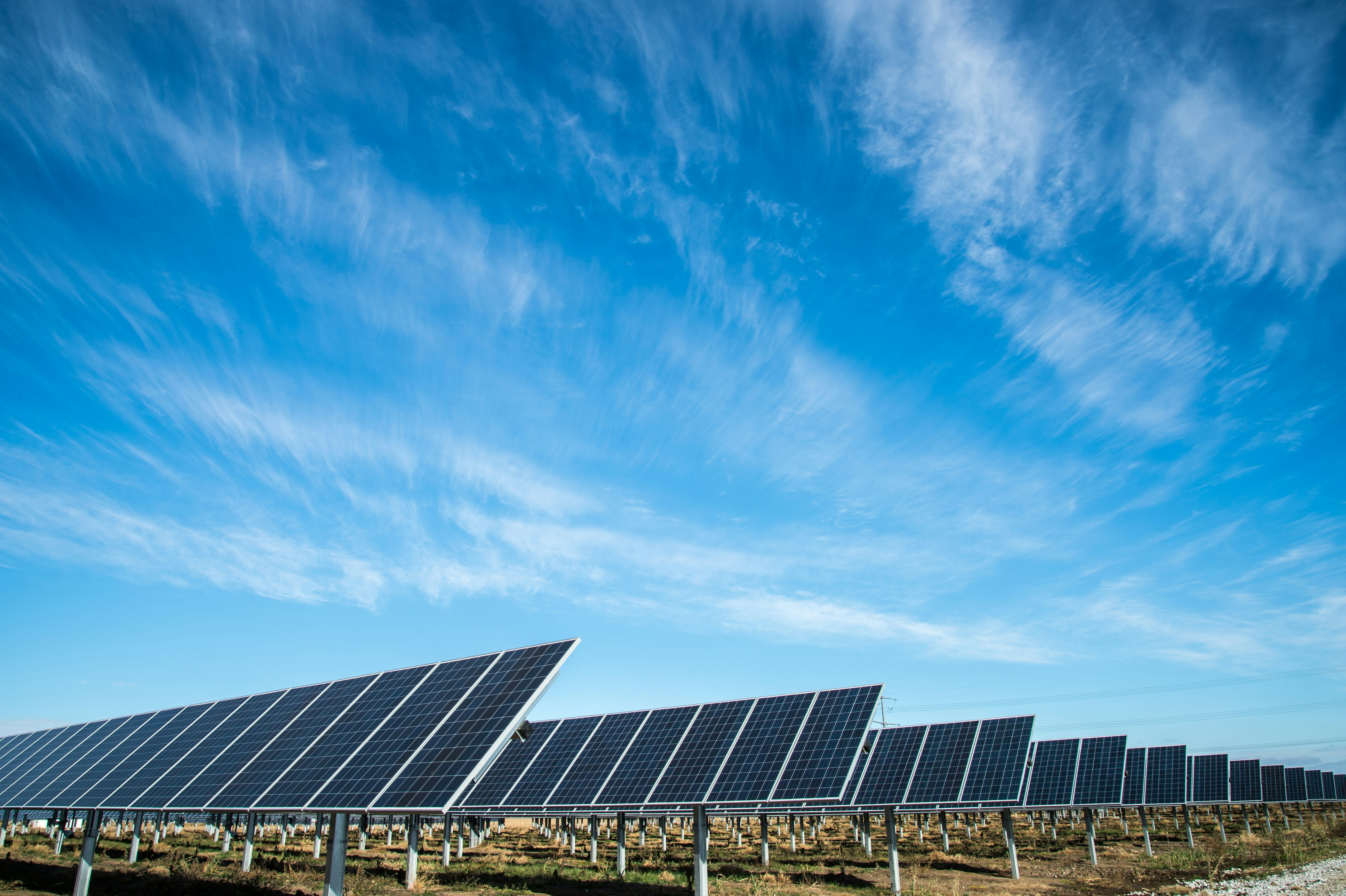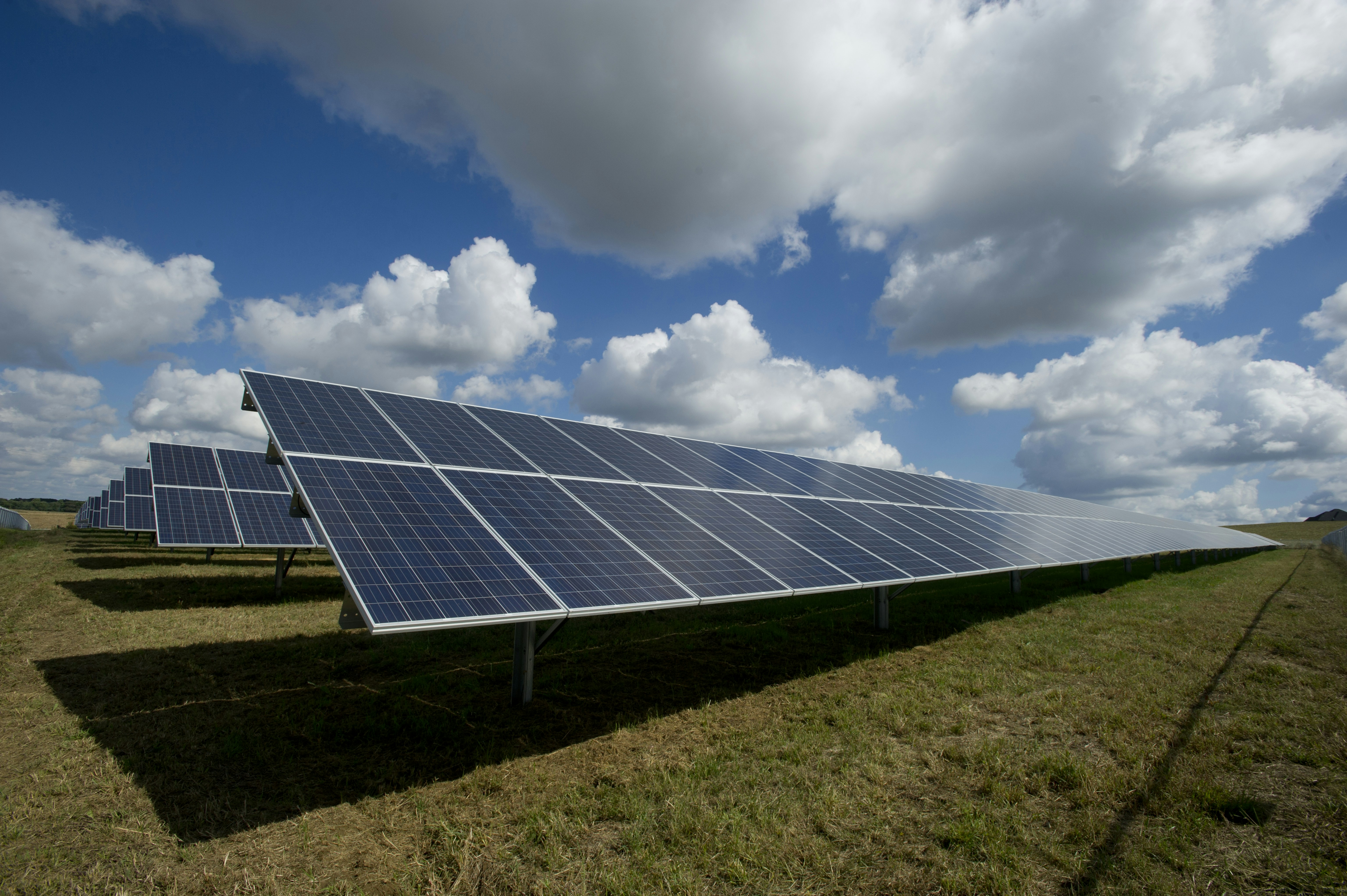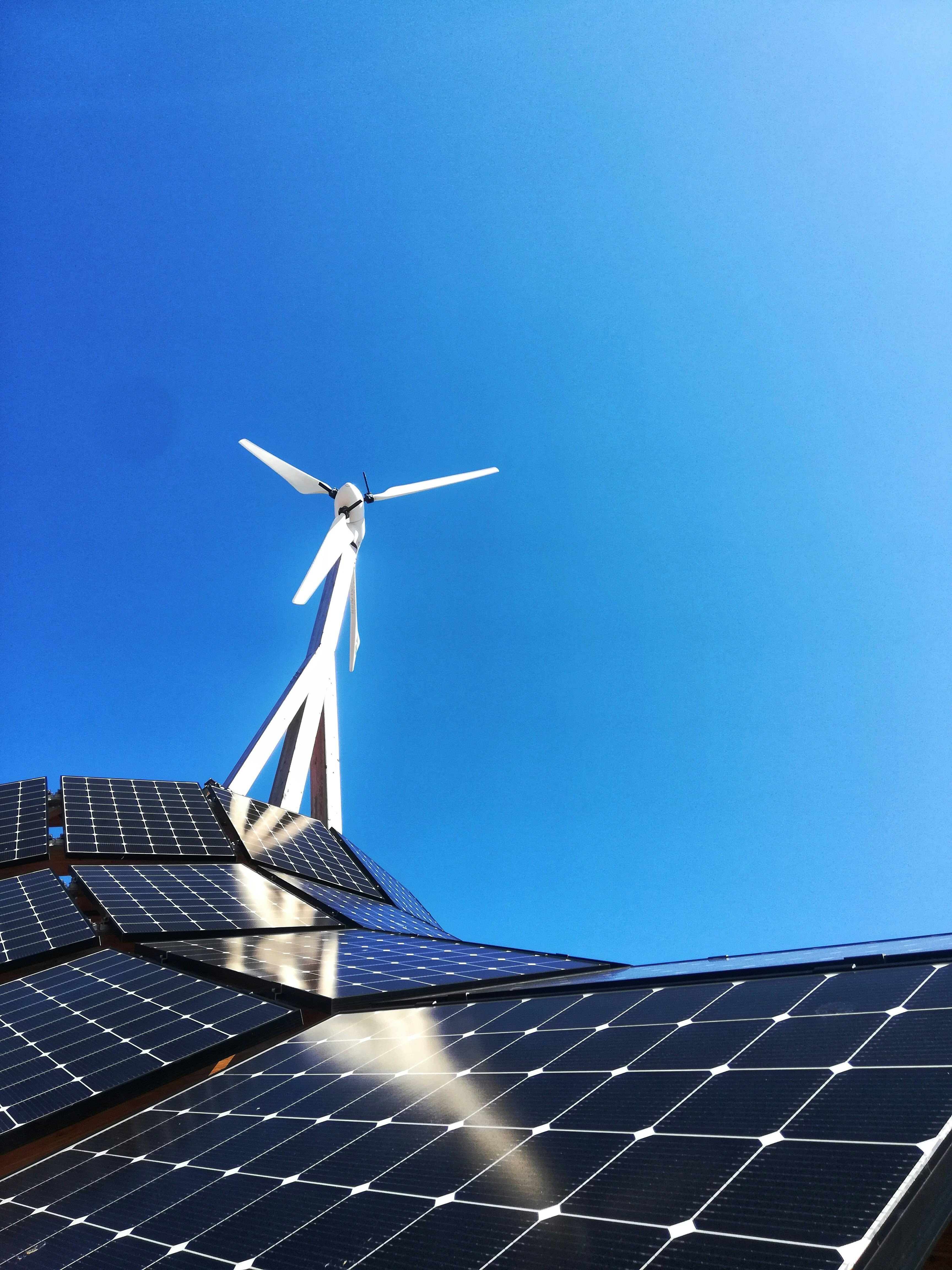Are you an outdoors enthusiast? Do you enjoy immersing yourself in the beauty of nature, exploring the wild, and challenging yourself with thrilling adventures? If so, then you know the importance of being prepared for anything that comes your way. In this article, we will explore the fascinating world of harnessing solar energy in the wild. With the Patriot portable solar generators, specifically designed for tactical, survival, and outdoorsman audiences, you can ensure a sustainable and reliable source of power to fuel your wilderness escapades. Get ready to discover the ultimate solution for sustainable survival in the great outdoors.
I. Understanding Solar Energy
A. Introduction to solar energy
Solar energy refers to the radiant light and heat from the Sun that is harnessed and converted into usable energy through various technologies such as solar panels. It is a renewable source of energy that is abundant and environmentally friendly. Unlike fossil fuels, solar energy does not produce harmful emissions or contribute to climate change. Harnessing solar energy has become increasingly popular in recent years due to its many benefits and potential applications.
B. Benefits of harnessing solar energy
Harnessing solar energy offers numerous benefits, both for individual users and for the planet as a whole. Firstly, solar energy is completely renewable, meaning that it will never run out as long as the Sun continues to shine. This makes solar energy a reliable and sustainable source of power, ensuring energy security for the future.
Solar energy also provides significant cost savings. Once the initial installation cost is covered, solar energy systems require minimal maintenance and have no fuel costs. This results in substantial savings on electricity bills over the long term. Additionally, solar energy systems can even generate surplus electricity that can be sold back to the grid, allowing users to make money from their investment.
Furthermore, harnessing solar energy helps reduce dependence on non-renewable fossil fuels, which are not only finite but also contribute to air and water pollution, as well as greenhouse gas emissions. By transitioning to solar energy, individuals can actively contribute to a cleaner and greener planet, mitigating climate change and preserving natural resources for future generations.
II. Solar Energy for Survival
A. Importance of solar energy in survival situations
In survival situations, having access to a reliable source of power is crucial. Whether you are camping, hiking, or facing a natural disaster, solar energy can provide the electricity needed to perform essential tasks and ensure your safety. In remote locations, where traditional power sources are inaccessible, solar energy allows you to stay connected, power devices, and even create a makeshift shelter.
B. Advantages of using solar energy for survival
One of the key advantages of using solar energy for survival is its portability. Portable solar generators, designed specifically for outdoor use, can be easily carried in backpacks or vehicles, enabling you to have a readily available power source wherever you go. Unlike traditional generators that require fuel, portable solar generators rely solely on the Sun for energy, eliminating the need for refueling and reducing the risk of running out of power.
Additionally, solar energy is quiet and emits no fumes, making it environmentally friendly and ideal for use in outdoor environments. This allows you to enjoy the peace and tranquility of nature without the noise and pollution associated with conventional generators. Solar energy also provides a more reliable and predictable power source, as long as there is sunlight available, ensuring that you have the energy needed to meet your survival needs.
III. Portable Solar Generators
A. Overview of portable solar generators
Portable solar generators are compact and lightweight devices that utilize solar panels to convert sunlight into electricity. They are specifically designed for outdoor use, making them ideal for survival situations, camping trips, and other off-grid activities. Portable solar generators typically consist of solar panels, a battery pack for energy storage, and various outlets and connectors for charging devices.
B. Features and components of portable solar generators
Portable solar generators come with a range of features and components that enhance their functionality and usability. Many models offer multiple charging options, including AC outlets, USB ports, and DC outputs, allowing you to charge a variety of devices such as smartphones, laptops, cameras, and even small appliances. Some portable solar generators also have built-in LED lights for illumination during nighttime.
Additionally, portable solar generators often include a built-in battery pack or power bank that stores excess energy generated by the solar panels. This allows you to charge devices even when there is no direct sunlight or during nighttime. Some models even have the capability to be charged through alternative power sources such as wall outlets or car chargers, providing further flexibility in charging options.
C. Benefits of using portable solar generators in the wild
Using portable solar generators in the wild offers several benefits. Firstly, they provide a reliable and uninterrupted power source, ensuring that you can charge your essential devices and stay connected even in remote areas. This can be crucial for emergency communication or navigation purposes. Additionally, portable solar generators eliminate the need for carrying extra batteries or relying on disposable power sources, reducing waste and environmental impact.
Moreover, portable solar generators are compact and lightweight, making them easy to transport and store. They can be folded or rolled up for convenient storage in backpacks or vehicles, allowing you to have a portable and self-contained energy system wherever you go. This versatility enables you to have power on-demand for various survival tasks, from charging electronic devices to running lighting and small appliances.
IV. Choosing the Right Solar Generator
A. Factors to consider when selecting a solar generator
When selecting a solar generator for survival purposes, several factors should be taken into consideration. Firstly, consider your power needs and the intended use of the generator. Calculate the wattage requirements of the devices you plan to charge or power, and ensure that the generator’s capacity meets or exceeds those requirements.
Next, consider the size and weight of the solar generator. If you plan to carry it in a backpack or travel light, opt for a compact and lightweight model. However, if you have a vehicle or base camp, you may prioritize a larger and more powerful generator with higher energy storage capacity.
B. Recommended solar generator brands
There are several reputable solar generator brands available in the market that cater specifically to the outdoor and survival niche. Some popular and reliable brands include Goal Zero, Jackery, and Patriot Power Generator. These brands offer a range of portable solar generators with different power capacities, features, and price points. It is recommended to research and compare different models to find the one that best fits your needs and budget.
C. Understanding power needs and capacity
Understanding your power needs and the capacity of the solar generator is essential for efficient energy management. Assess the wattage requirements of the devices you plan to charge or power, and ensure that the solar generator has sufficient capacity to meet those needs. Consider factors such as the duration of usage, the number of devices being charged simultaneously, and the energy storage capacity of the generator’s battery pack.
By selecting a solar generator with the appropriate power capacity, you can ensure that you have enough energy to sustain your essential survival tasks without depleting the battery too quickly. This will provide peace of mind and prevent unexpected power shortages in critical situations.
V. Harnessing Solar Energy in the Wild
A. Setting up a solar energy system in the wild
Setting up a solar energy system in the wild requires careful planning and knowledge of the surrounding environment. Start by finding a suitable location with ample sunlight exposure throughout the day. Clear any obstructions such as trees or rocks that may cast shadows on the solar panels. Ensure that the panels are securely mounted or positioned to withstand wind and environmental conditions.
B. Positioning and angling solar panels for maximum efficiency
Positioning and angling the solar panels correctly is crucial for maximizing energy efficiency. The optimal angle for solar panels varies depending on the geographical location and season. In general, align the panels to face the Sun directly and adjust the tilt angle to capture the maximum amount of sunlight. This can be done manually or with the help of adjustable mounting brackets or stands.
C. Protecting solar panels in rugged environments
In rugged environments, it is important to protect the solar panels from potential damage. Invest in durable and rugged solar panels that are specifically designed for outdoor use. These panels are often made with tempered glass or other shatter-resistant materials to withstand harsh conditions. Consider using protective covers or cases when not in use to prevent scratches or breakage. Regularly inspect and clean the solar panels to remove dust, debris, or snow that may affect their efficiency.
VI. Utilizing Solar Power for Essential Survival Tasks
A. Charging electronic devices
Solar power can be utilized to charge essential electronic devices in survival situations. With the wide range of charging options available in portable solar generators, you can conveniently charge smartphones, tablets, GPS devices, radios, and other small electronics. Ensure that the devices are compatible with the charger connectors and check the power output to avoid overloading the generator.
B. Powering lighting and communication devices
Lighting and communication devices are essential for survival in the wild. Utilize solar power to charge or operate LED lights, headlamps, lanterns, and walkie-talkies. This will provide illumination during nighttime and enable effective communication with other individuals or rescue teams if needed. Opt for energy-efficient lighting options to conserve battery power and extend operating time.
C. Running small appliances
Some portable solar generators have the capacity to power small appliances, such as mini-fridges, fans, or portable stoves. This can significantly enhance comfort and convenience in the wild. Ensure that the solar generator has the necessary power capacity and compatible outlets for such appliances. It is important to manage energy consumption wisely to avoid draining the battery too quickly.
VII. Extended Survival with Solar Energy
A. Long-term power solutions
In situations requiring extended survival, a long-term power solution becomes essential. Consider investing in larger solar energy systems, such as roof-mounted solar panels or solar arrays, to provide sustained power supply. These systems can generate a higher volume of electricity and may have the capability for battery storage.
B. Battery storage options
Battery storage options enable you to store excess solar energy generated during the day for use during nighttime or when sunlight is limited. This ensures a continuous power supply and allows you to charge devices or run appliances even when the Sun is not shining. Research and select suitable battery storage options that integrate well with your solar energy system and provide the desired energy capacity.
C. Expanding solar energy systems
As your energy needs grow or if you have the intention to power more devices or appliances, consider expanding your solar energy system. This can be accomplished by adding additional solar panels, increasing the energy storage capacity, or integrating new technologies such as solar trackers or micro-inverters. Consult with professionals or experts in the field to ensure that the expansion is done correctly and safely.
VIII. Maintaining Solar Energy Systems
A. Cleaning and maintaining solar panels
Regular cleaning and maintenance of solar panels are important to ensure optimal energy production. Remove any dirt, dust, or debris that may accumulate on the panels, as they can reduce the efficiency of the system. Use a soft brush or gentle cleaning solution to wipe the surface of the panels. Check for any signs of damage or wear and replace components if necessary.
B. Troubleshooting common issues
Occasionally, solar energy systems may encounter common issues that require troubleshooting. Some common issues include loose connections, faulty wiring, or reduced energy production. Conduct regular inspections and perform basic troubleshooting steps, such as checking connections and fuses. For more complex issues, consult with professionals or refer to the user manual for specific guidance.
C. Repairing and replacing components
In the event of component failure or damage, it is important to have the necessary knowledge and skills to repair or replace the affected components. This may involve soldering wires, replacing damaged solar panels, or troubleshooting battery packs. It is recommended to have spare parts or components readily available in case of emergencies. If unsure or inexperienced, seek assistance from professionals to avoid further damage or potential hazards.
IX. Safety Considerations for Solar Energy
A. Electrical safety precautions
When dealing with solar energy systems, it is important to follow electrical safety precautions. Ensure that all connections are properly insulated and protected from moisture or environmental elements. Avoid touching live wires or exposed contacts. If necessary, wear appropriate personal protective equipment, such as insulated gloves, when working with the system. Familiarize yourself with the system’s safety features and emergency shut-off procedures.
B. Avoiding overheating and fire hazards
Solar energy systems generate heat during operation, and it is important to avoid overheating and fire hazards. Ensure proper ventilation and airflow around the solar panels and components to dissipate heat effectively. Regularly monitor the temperature levels and identify any signs of abnormal heating. If necessary, adjust the positioning or angle of the panels to optimize airflow and minimize heat buildup.
C. Protecting solar panels during extreme weather conditions
Extreme weather conditions, such as storms, heavy rain, or hail, can potentially damage solar panels. Take necessary precautions to protect the panels during such events. Secure the panels properly to prevent detachment or displacement due to strong winds. Consider using protective covers or enclosures to shield the panels from hail or debris. Regularly inspect the panels after extreme weather events for any signs of damage and perform repairs or replacements as needed.
X. Next Steps: Embracing Solar Energy for Sustainable Survival
A. Advocating for solar energy in outdoor communities
Share your knowledge and experience of harnessing solar energy with outdoor communities to promote its benefits and encourage sustainable practices. Advocate for the use of solar energy in outdoor activities, education programs, or community initiatives. Highlight the importance of renewable energy sources and their positive impact on the environment.
B. Exploring other renewable energy sources
While solar energy is a reliable and sustainable source of power, it is essential to explore other renewable energy sources as well. Research and educate yourself on alternative options such as wind energy, hydroelectric power, or biomass energy. Understanding the pros and cons of different renewable energy technologies will enable you to make informed decisions and contribute to a more diverse and resilient energy future.
C. Investing in solar energy for long-term sustainability
Consider investing in solar energy for long-term sustainability. Evaluate if a residential solar energy system is suitable for your home or property. Consult with solar energy providers or professionals to assess feasibility, energy requirements, and financial considerations. Investing in solar energy not only provides long-term cost savings but also significantly reduces your carbon footprint and contributes to a greener and more sustainable future.
In conclusion, harnessing solar energy in the wild offers countless benefits for survival and sustainability. Portable solar generators provide a reliable and portable power source for essential survival tasks, while larger solar energy systems offer long-term power solutions. It is essential to choose the right solar generator based on power needs and capacity, understand how to set up and maintain solar energy systems, and prioritize safety considerations. By embracing solar energy and advocating for its use, we can contribute to a more sustainable and resilient future for ourselves and the planet.









